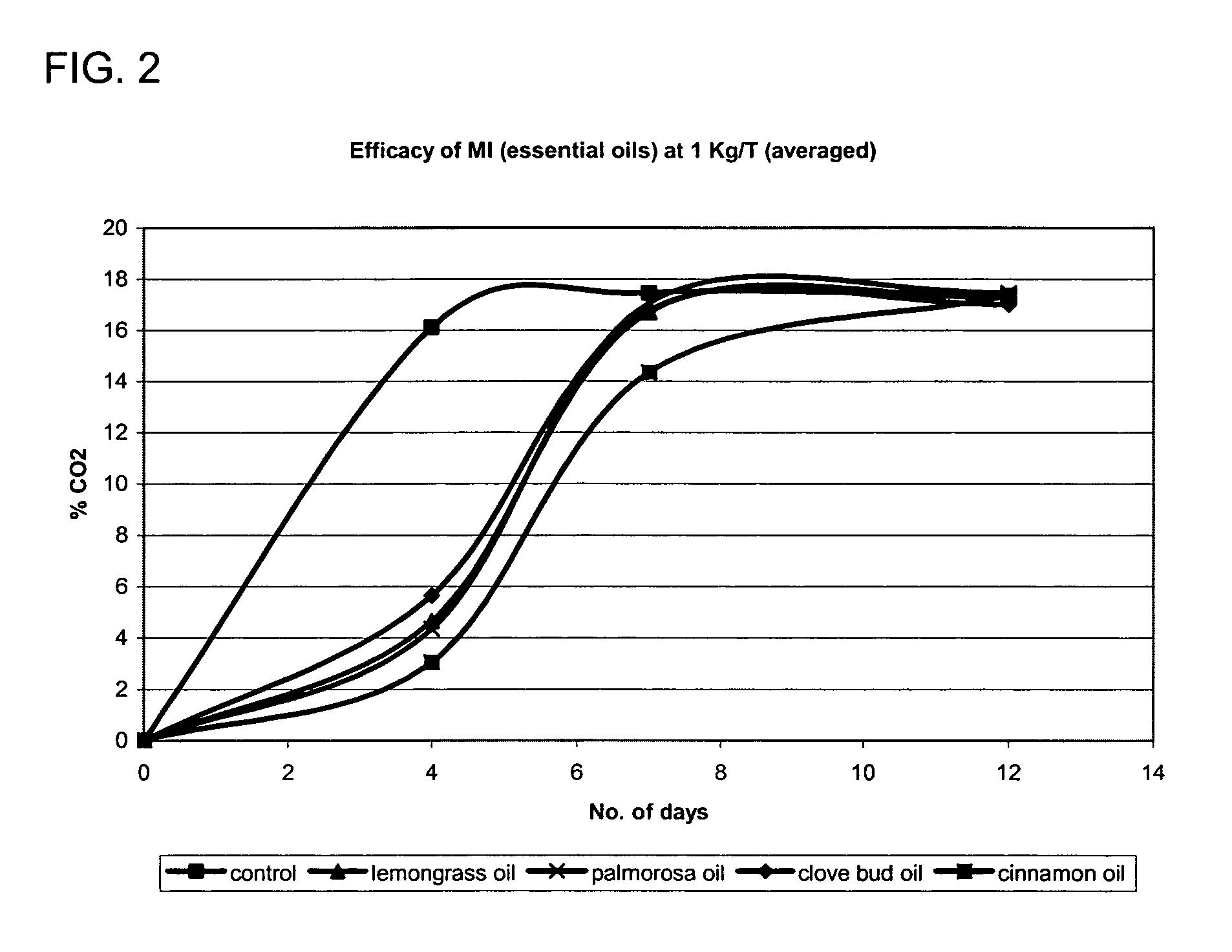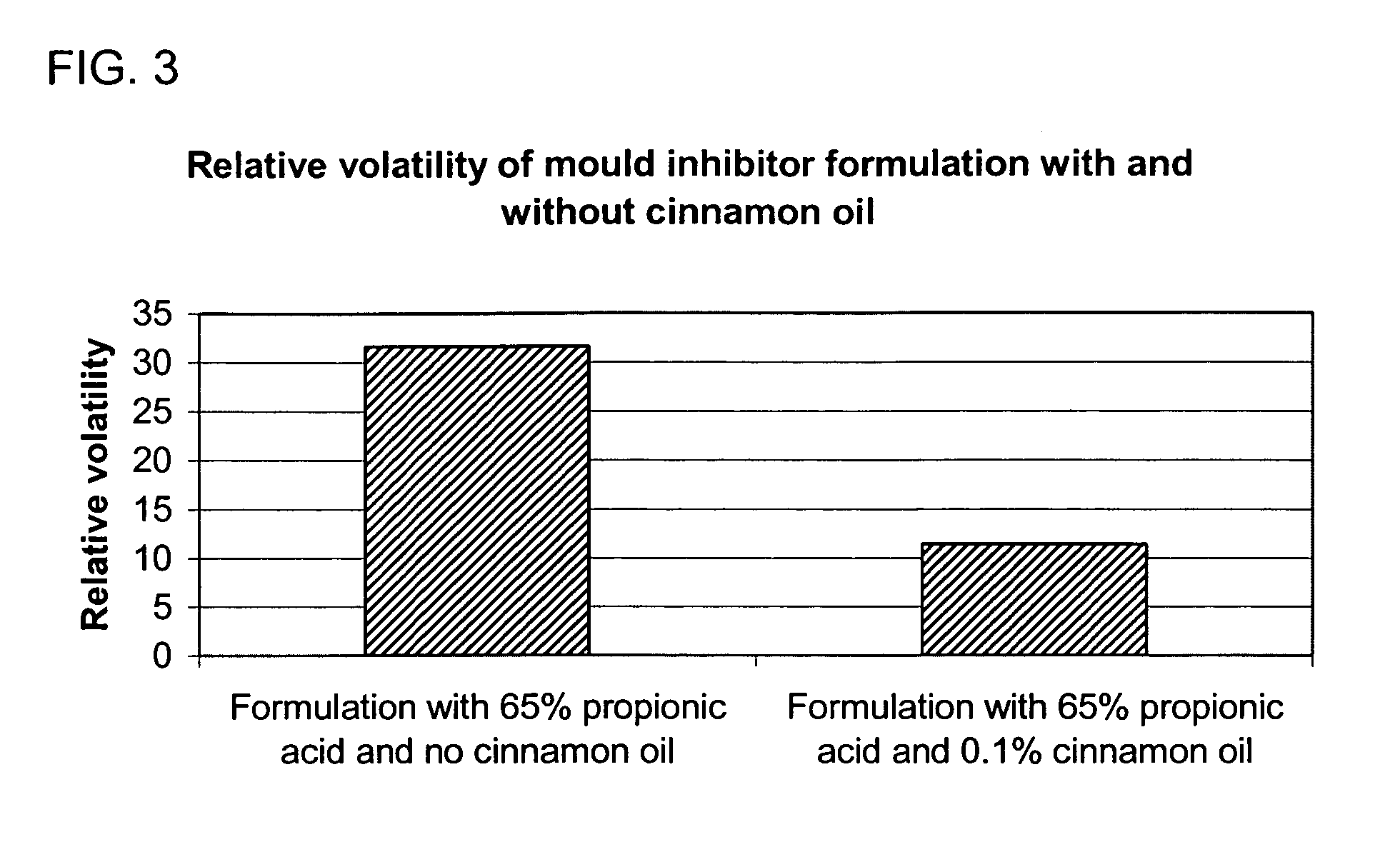Mold inhibitor having reduced corrosiveness
a technology of corrosiveness and mold inhibitors, which is applied in the field of mold inhibitors, can solve the problems of feed mill managers who are very sensitive to corrosive problems, and achieve the effects of less corrosive, improved efficacy, and equal cost-effectiveness
- Summary
- Abstract
- Description
- Claims
- Application Information
AI Technical Summary
Benefits of technology
Problems solved by technology
Method used
Image
Examples
experiment 2
II. Efficacy of Mold Inhibitor by Carbon Dioxide Production
[0044]A. Methods
[0045]Field corn samples and feed samples were used for the tests. 150 g of corn or feed sample was taken in a transparent plastic bag and the moisture content adjusted to 16% (w / w). The mold inhibitor was added to the sample at a dosage equivalent to 1 kg / T of feed. The sample was then mixed thoroughly. A sample, free of mould inhibitor, was used as the control. Samples were transferred into sterile 500 ml plastic bottles. Each container was covered with the push-in seal and the silicon tubing clamped with a Hoffman clip. The containers were incubated at 25° C. The carbon dioxide concentration in the headspace was measured every 2 days using a Gasminder carbon dioxide detector.
[0046]B. Results
[0047]Experimental formulations with 0.1% of essential oil were prepared and subjected to the carbon dioxide test to compare the efficacy of these formulations in mold inhibition. The essential oils used in these formu...
PUM
 Login to View More
Login to View More Abstract
Description
Claims
Application Information
 Login to View More
Login to View More - R&D
- Intellectual Property
- Life Sciences
- Materials
- Tech Scout
- Unparalleled Data Quality
- Higher Quality Content
- 60% Fewer Hallucinations
Browse by: Latest US Patents, China's latest patents, Technical Efficacy Thesaurus, Application Domain, Technology Topic, Popular Technical Reports.
© 2025 PatSnap. All rights reserved.Legal|Privacy policy|Modern Slavery Act Transparency Statement|Sitemap|About US| Contact US: help@patsnap.com



